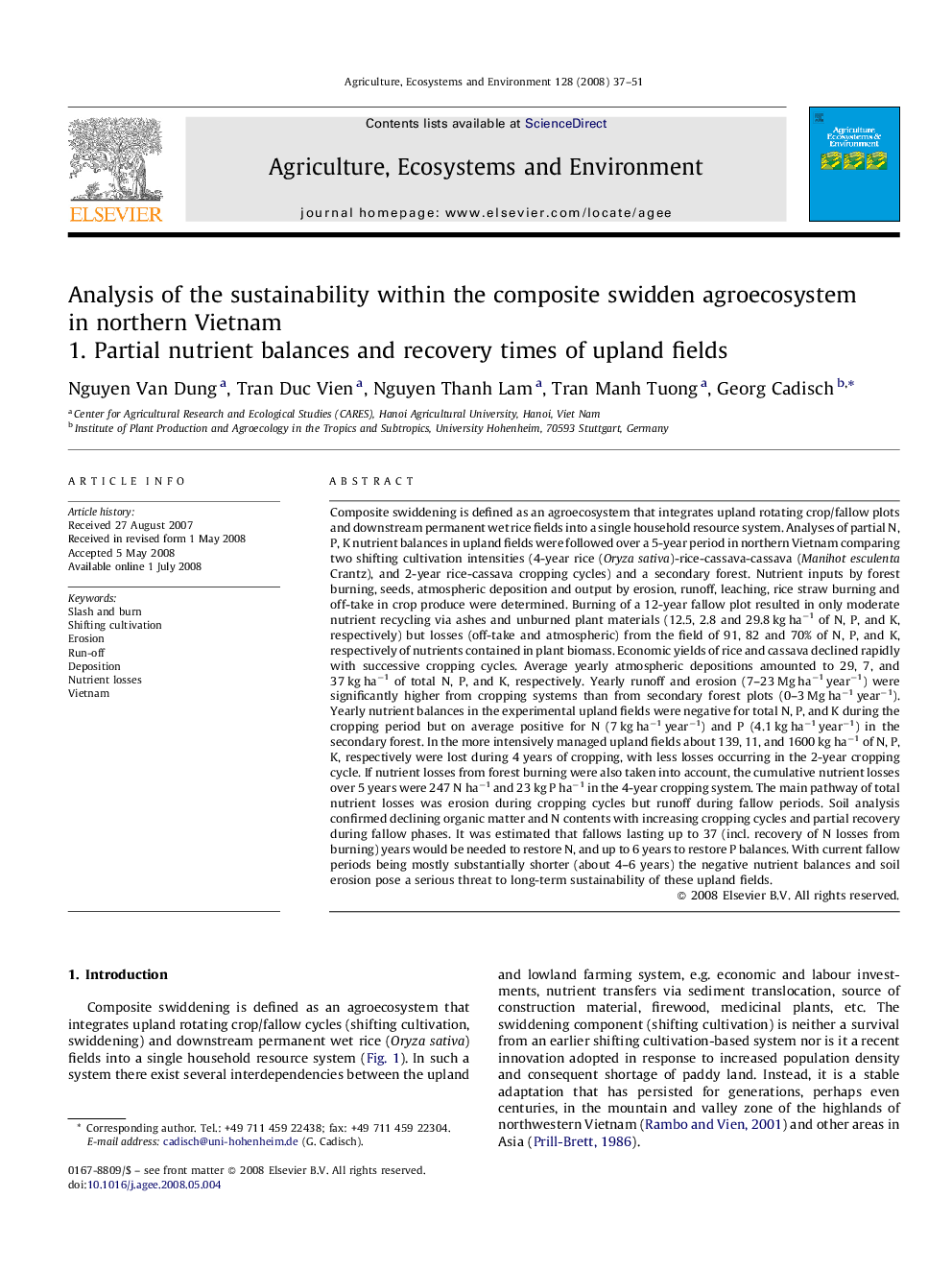| کد مقاله | کد نشریه | سال انتشار | مقاله انگلیسی | نسخه تمام متن |
|---|---|---|---|---|
| 2415353 | 1552131 | 2008 | 15 صفحه PDF | دانلود رایگان |

Composite swiddening is defined as an agroecosystem that integrates upland rotating crop/fallow plots and downstream permanent wet rice fields into a single household resource system. Analyses of partial N, P, K nutrient balances in upland fields were followed over a 5-year period in northern Vietnam comparing two shifting cultivation intensities (4-year rice (Oryza sativa)-rice-cassava-cassava (Manihot esculenta Crantz), and 2-year rice-cassava cropping cycles) and a secondary forest. Nutrient inputs by forest burning, seeds, atmospheric deposition and output by erosion, runoff, leaching, rice straw burning and off-take in crop produce were determined. Burning of a 12-year fallow plot resulted in only moderate nutrient recycling via ashes and unburned plant materials (12.5, 2.8 and 29.8 kg ha−1 of N, P, and K, respectively) but losses (off-take and atmospheric) from the field of 91, 82 and 70% of N, P, and K, respectively of nutrients contained in plant biomass. Economic yields of rice and cassava declined rapidly with successive cropping cycles. Average yearly atmospheric depositions amounted to 29, 7, and 37 kg ha−1 of total N, P, and K, respectively. Yearly runoff and erosion (7–23 Mg ha−1 year−1) were significantly higher from cropping systems than from secondary forest plots (0–3 Mg ha−1 year−1). Yearly nutrient balances in the experimental upland fields were negative for total N, P, and K during the cropping period but on average positive for N (7 kg ha−1 year−1) and P (4.1 kg ha−1 year−1) in the secondary forest. In the more intensively managed upland fields about 139, 11, and 1600 kg ha−1 of N, P, K, respectively were lost during 4 years of cropping, with less losses occurring in the 2-year cropping cycle. If nutrient losses from forest burning were also taken into account, the cumulative nutrient losses over 5 years were 247 N ha−1 and 23 kg P ha−1 in the 4-year cropping system. The main pathway of total nutrient losses was erosion during cropping cycles but runoff during fallow periods. Soil analysis confirmed declining organic matter and N contents with increasing cropping cycles and partial recovery during fallow phases. It was estimated that fallows lasting up to 37 (incl. recovery of N losses from burning) years would be needed to restore N, and up to 6 years to restore P balances. With current fallow periods being mostly substantially shorter (about 4–6 years) the negative nutrient balances and soil erosion pose a serious threat to long-term sustainability of these upland fields.
Journal: Agriculture, Ecosystems & Environment - Volume 128, Issues 1–2, October 2008, Pages 37–51